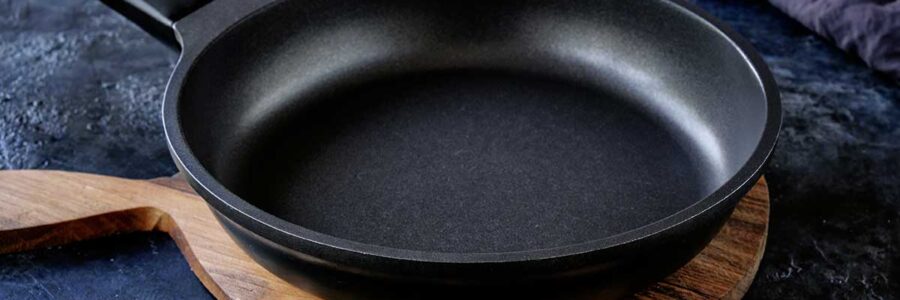Nonstick cookware has long been marketed as a convenient solution for home cooks, but the risks associated with Teflon pans are too significant to ignore. Teflon, made with polytetrafluoroethylene (PTFE), releases toxic fumes when heated to high temperatures and contains chemicals like PFAS that persist in the environment and the human body. The convenience of Teflon comes at the cost of exposure to substances linked to hormone disruption, immune system suppression, and even cancer. By understanding the dangers of Teflon and embracing non-toxic alternatives, you can protect your family’s health while maintaining a high level of cooking performance.
The Hidden Risks of Teflon
Teflon pans are coated with PTFE to achieve their slippery surface, but this coating breaks down at high temperatures, releasing toxic fumes. In the past, Teflon production also involved perfluorooctanoic acid (PFOA), a chemical phased out due to its association with cancer and other health risks.[1] However, modern nonstick coatings often use similar chemicals known as PFAS. PFAS, or “forever chemicals,” accumulate in the body and the environment, with studies linking them to serious health issues. Families using scratched or damaged Teflon pans are at an even higher risk, as these conditions can lead to chemical leaching into food.[2]
Non-Toxic Cookware Alternatives
Non-toxic cookware offers home cooks a safe, durable, and effective solution. Cast iron, carbon steel, and stainless steel are the best options for replacing Teflon pans, each providing unique benefits for various cooking needs.
- Cast Iron Cast iron pans are ideal for high-heat cooking and retain heat exceptionally well. When properly seasoned, they develop a natural nonstick surface that improves with use. Cast iron is also a toxin-free option that can enrich food with iron.
- Carbon Steel Carbon steel pans are lighter than cast iron and heat up more quickly. They are highly versatile and ideal for stir-frying, sautéing, and frying. Like cast iron, they develop a nonstick surface over time through seasoning.
- Stainless Steel Stainless steel cookware is durable, easy to clean, and corrosion-resistant. While it doesn’t naturally season like cast iron or carbon steel, it can achieve nonstick properties with proper preheating and cooking techniques. Stainless steel is an excellent choice for boiling, simmering, and frying.
How to Create a Nonstick Surface Naturally
Switching to non-toxic cookware doesn’t mean losing the convenience of nonstick cooking. You can make cast iron, carbon steel, or stainless steel pans perform like nonstick pans with the right techniques.
- Preheat Your Pan Proper preheating ensures even heat distribution and prevents food from sticking. Heat the pan on medium to medium-low for 5-10 minutes. For stainless steel, perform the water test: the pan is ready if droplets bead up and glide across the surface.
- Add the right fat ghee and coconut oil, which are excellent choices for creating a nonstick barrier. Use a small amount of fat and spread it evenly across the pan. If the fat smokes, reduce the heat and start again.
- Let Food Cook Fully. Allow food to cook completely on one side before flipping or stirring. This technique helps caramelize the surface, naturally releasing it from the pan.
Caring for Non-Toxic Cookware
Proper care ensures that non-toxic pans remain effective and last for years. Cast iron and carbon steel should be seasoned regularly with a thin layer of oil to maintain their nonstick properties. Stainless steel requires thorough cleaning after each use and occasional polishing to remove stains. These simple maintenance routines reward you with cookware that improves over time.
Safer Kitchens, Healthier Homes
Switching to non-toxic cookware is a simple but impactful step toward reducing your family’s exposure to harmful chemicals. Cast iron, carbon steel, and stainless steel pans provide a durable and versatile alternative to Teflon, offering all the benefits of nonstick cooking without the risks. With proper techniques and care, these pans can become the cornerstone of a clean, toxin-free kitchen. By choosing safer cookware, you’re not just making better meals—you’re making a healthier home.
References:
- Sajid, Muhammad, and Muhammad Ilyas. “PTFE-Coated Non-Stick Cookware and Toxicity Concerns: A Perspective.” Environmental Science and Pollution Research International, vol. 24, no.
- Fenton, Suzanne E., et al. “Per- and Polyfluoroalkyl Substance Toxicity and Human Health Review: Current State of Knowledge and Strategies for Informing Future Research.” Environmental Toxicology and Chemistry, vol. 40, no. 3, Mar. 2021, pp. 606–30.


